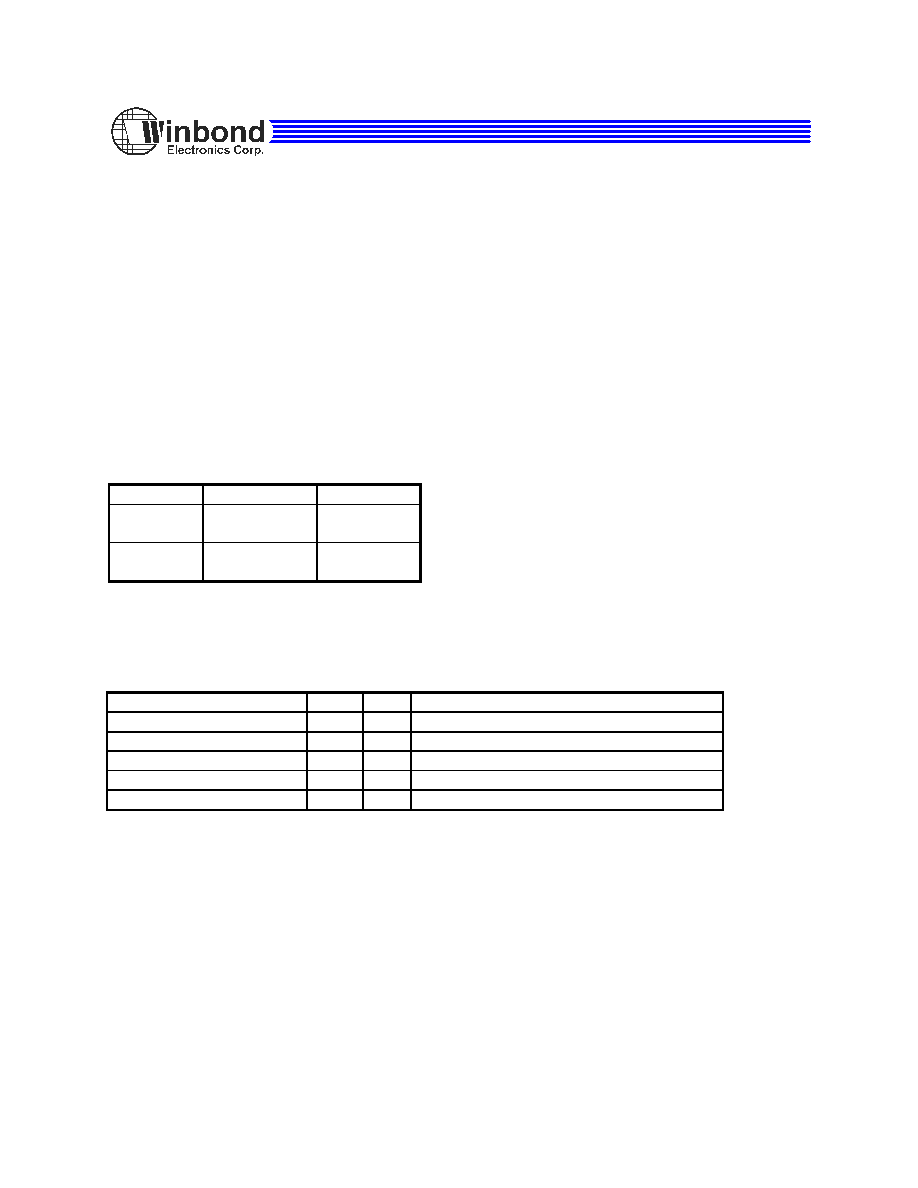- 您現(xiàn)在的位置:買賣IC網 > PDF目錄68459 > W6692ACD (WINBOND ELECTRONICS CORP) DATACOM, ISDN CONTROLLER, PQFP100 PDF資料下載
參數資料
| 型號: | W6692ACD |
| 廠商: | WINBOND ELECTRONICS CORP |
| 元件分類: | 數字傳輸電路 |
| 英文描述: | DATACOM, ISDN CONTROLLER, PQFP100 |
| 封裝: | LQFP-100 |
| 文件頁數: | 21/98頁 |
| 文件大?。?/td> | 584K |
| 代理商: | W6692ACD |
第1頁第2頁第3頁第4頁第5頁第6頁第7頁第8頁第9頁第10頁第11頁第12頁第13頁第14頁第15頁第16頁第17頁第18頁第19頁第20頁當前第21頁第22頁第23頁第24頁第25頁第26頁第27頁第28頁第29頁第30頁第31頁第32頁第33頁第34頁第35頁第36頁第37頁第38頁第39頁第40頁第41頁第42頁第43頁第44頁第45頁第46頁第47頁第48頁第49頁第50頁第51頁第52頁第53頁第54頁第55頁第56頁第57頁第58頁第59頁第60頁第61頁第62頁第63頁第64頁第65頁第66頁第67頁第68頁第69頁第70頁第71頁第72頁第73頁第74頁第75頁第76頁第77頁第78頁第79頁第80頁第81頁第82頁第83頁第84頁第85頁第86頁第87頁第88頁第89頁第90頁第91頁第92頁第93頁第94頁第95頁第96頁第97頁第98頁

Data Sheet
W6692A PCI ISDN S/T-Controller
Publication Release Date:
Mar,2000
Revision 1.0
-28 -
7.2.4 D Channel Access Control
The D channel access control includes collision detection and priority management. The collision detection is always enabled.
The priority management procedure as specified in ITU-T I.430 is fully implemented in W6692A.
A collision is detected if the transmitted D bit and the received echo bit do not match. When this occurs, D channel
transmission is immediately stopped, and the echo channel is monitored to attempt the next D channel access.
There are two priority classes: class 1 and class 2. Within each class, there are normal and lower priority levels.
TABLE 7.4 D PRIORITY CLASSES
Normal level
Lower level
Priority
class
1
8
9
Priority
class
2
10
11
The selection of priority class is via the AR8/AR10 command. The following table summarizes the commands/indications
used for setting the priority classes:
TABLE 7.5 D PRIORITY COMMANDS/INDICATIONS
Command
Symbol
Code
Remarks
Activate request, set priority 8
AR8
1000
Activation command, set D channel priority to 8
Activate request, set priority 10
AR10
1001
Activation command, set D channel priority to 10
Indication
Abbr.
Remarks
Activate indication with priority 8
AI8
1100
Info 4 received, D channel priority is 8 or 9
Activate indication with priority 10 AI10
1101
Info 4 received, D channel priority is 10 or 11
7.2.5 Frame Alignment
The following sections describe the behavior of W6692A in respect to the CTS-2 conformance test procedures for frame
alignment. Please refer to ETSI-TM3 Appendix B1 for detailed descriptions.
相關PDF資料 |
PDF描述 |
|---|---|
| W6692ACF | DATACOM, ISDN CONTROLLER, PQFP100 |
| W6694ACD | DATACOM, ISDN CONTROLLER, PQFP48 |
| W671320P | TELECOM-SLIC, PQCC28 |
| W671361P | TELECOM-SLIC, PQCC28 |
| W671361Y | TELECOM-SLIC, QCC32 |
相關代理商/技術參數 |
參數描述 |
|---|---|
| W6692ACF | 制造商:未知廠家 制造商全稱:未知廠家 功能描述:ISDN LINE INTERFACE|BASIC|CMOS|QFP|100PIN|PLASTIC |
| W6694 | 制造商:WINBOND 制造商全稱:Winbond 功能描述:USB Bus ISDN S/T-Controller |
| W6694A | 制造商:未知廠家 制造商全稱:未知廠家 功能描述:TE Mode S/T Controller with USB 1.1 Interface |
| W6694CD | 制造商:WINBOND 制造商全稱:Winbond 功能描述:USB Bus ISDN S/T-Controller |
| W66ARX-18 | 制造商:Magnecraft 功能描述: |
發(fā)布緊急采購,3分鐘左右您將得到回復。